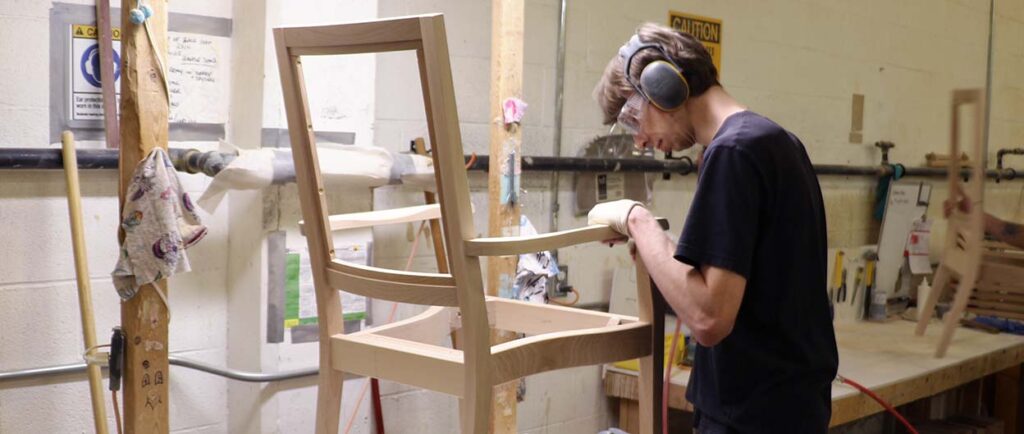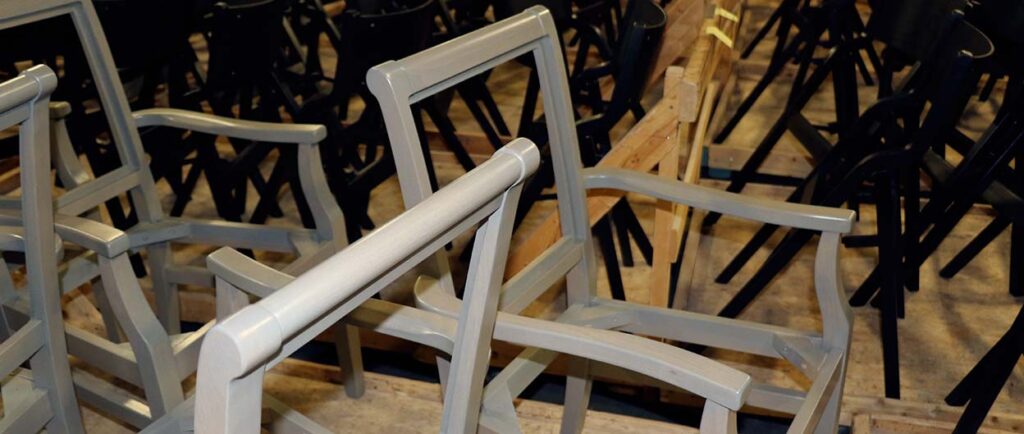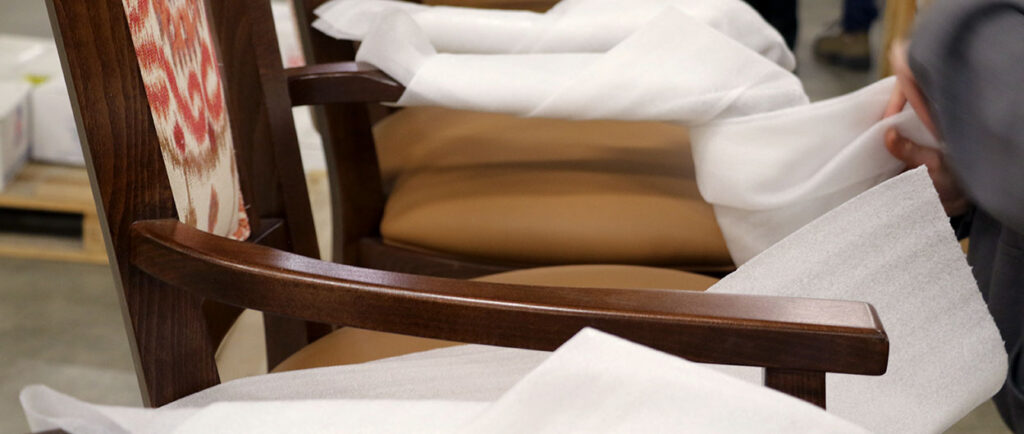What’s the best way to know you’re buying durable wooden chairs that will last for years and live up to daily wear and tear? Inquire about the finishing process.
The process and catalyzed lacquer ensure the strength and endurance of our wooden frames
One of the best features of wooden chair frames is that they can be easily customized with a wide variety of color options. This is because wood accepts the staining process very well.
Unfortunately, this also means wood is likely to absorb other, less desirable things such as spills and germs. Wooden chair frames are also more likely to show dents, nicks, and scratches than other types of frames such as aluminum and steel.
These facts illustrate why the quality of the finishing process is so important.
Before purchasing wooden chairs, ask about this process and find out what type of lacquer the manufacturer uses. It should be sturdy, such as a catalyzed lacquer, to hold the color and prevent chips and dents. A strong lacquer will also prevent the absorption of germs and spills as well as issues from humid or dry climates.
Holsag stands behind our wooden chairs with a 10-year frame warranty. Our unique nine-step finishing process should help you feel confident with your purchase.

We’ll break it down for you here.
Step One: Sanding
- The frame is constructed using 100% European Beech hardwood. It’s then sanded using 100 grit sandpaper.
- The grit number of a sanding paper indicates the size of the abrasive particles. There is paper available with numbers from 24 to 2,000 or more. A higher number indicates smaller particles, which leave a finer, more polished appearance. Paper with a grit number of 100 is a good choice for the final prep before finishing.
Step Two: Staining
- The first coat of stain is sprayed onto the entire frame.
Step Three: Hand Wiping
- The stain is hand wiped onto the frame to ensure the color is even throughout—including inside crevices, corners, and joints. Hand wiping also ensures maximum penetration into the wood.
Step Four: Inspection
- The frame is thoroughly inspected to see if any adjustments need to be made to the stain. Any necessary adjustments are made at this stage.

Step Five: Sealant
- One coat of a catalyzed sealer is sprayed onto the entire frame to completely seal the wood. This includes the underside of the seat.
Step Six: More Sanding
- Once the stain and sealant are dry, the catalyzed sealer is sanded using 280 grit sandpaper. Paper with grit numbers of 180 to 320 is ideal for scuffing between finish coats.
Step Seven: Final Sanding
- Final sanding is done using Scotch Brite® pads to remove any sanding marks.
Step Eight: Catalyzed Lacquer
- A coat of catalyzed lacquer is sprayed onto the frame. This type of lacquer is very durable to prevent color fading, denting, chipping, and scratching. It will also prevent the wood from absorbing spills and germs, and from being affected by environmental factors such as humidity.
- Additionally, this is an antimicrobial formula that that inhibits the growth of micro-organisms such as bacteria, viruses, fungi, algae, mold, mildew, and more.
Step Nine: Quality Assurance
- Before packaging and shipping, a final inspection is performed to ensure a high level of quality.
